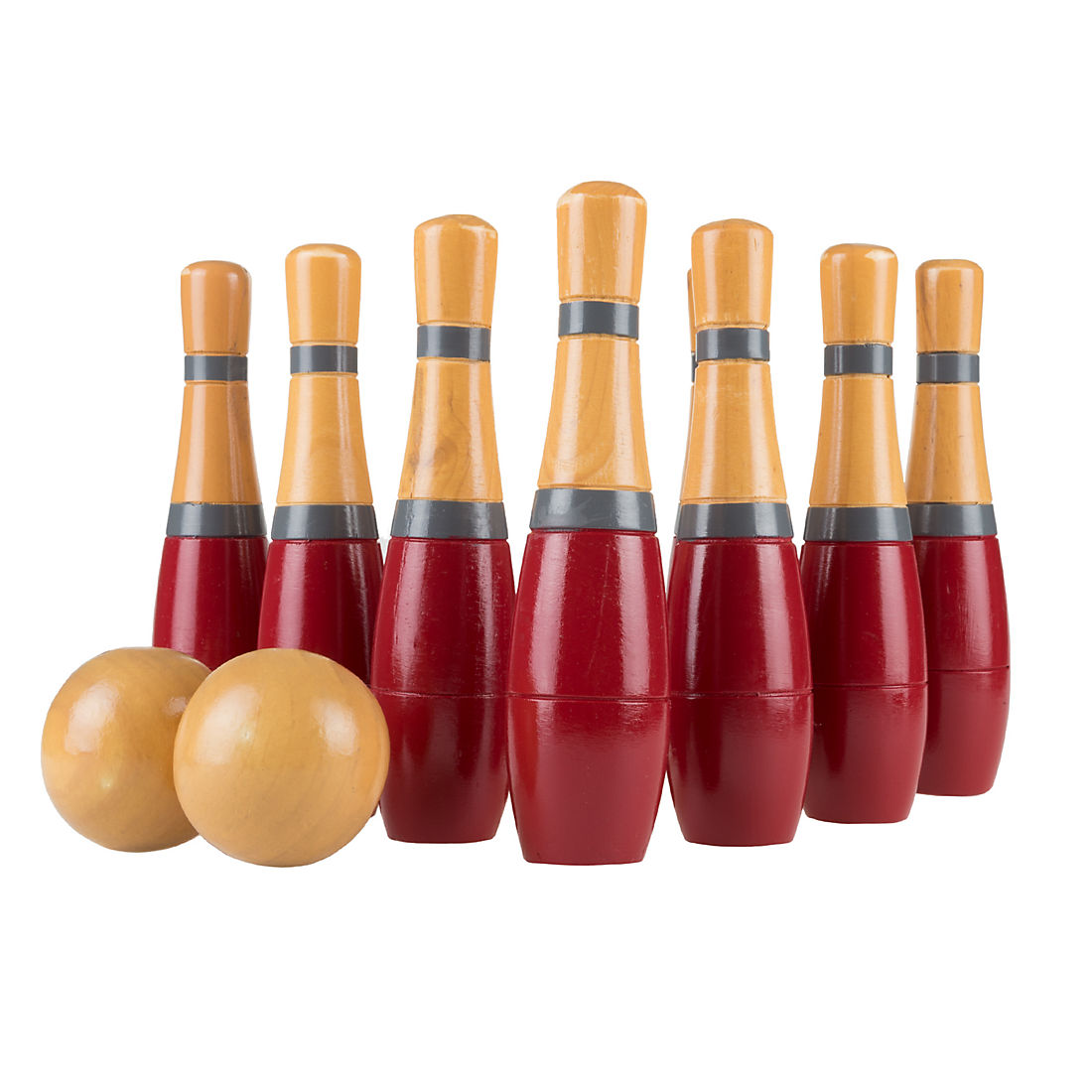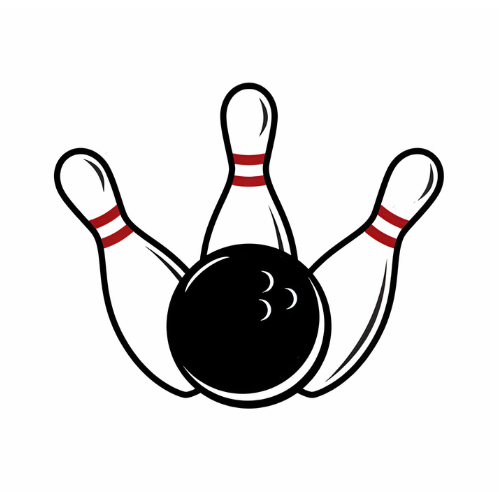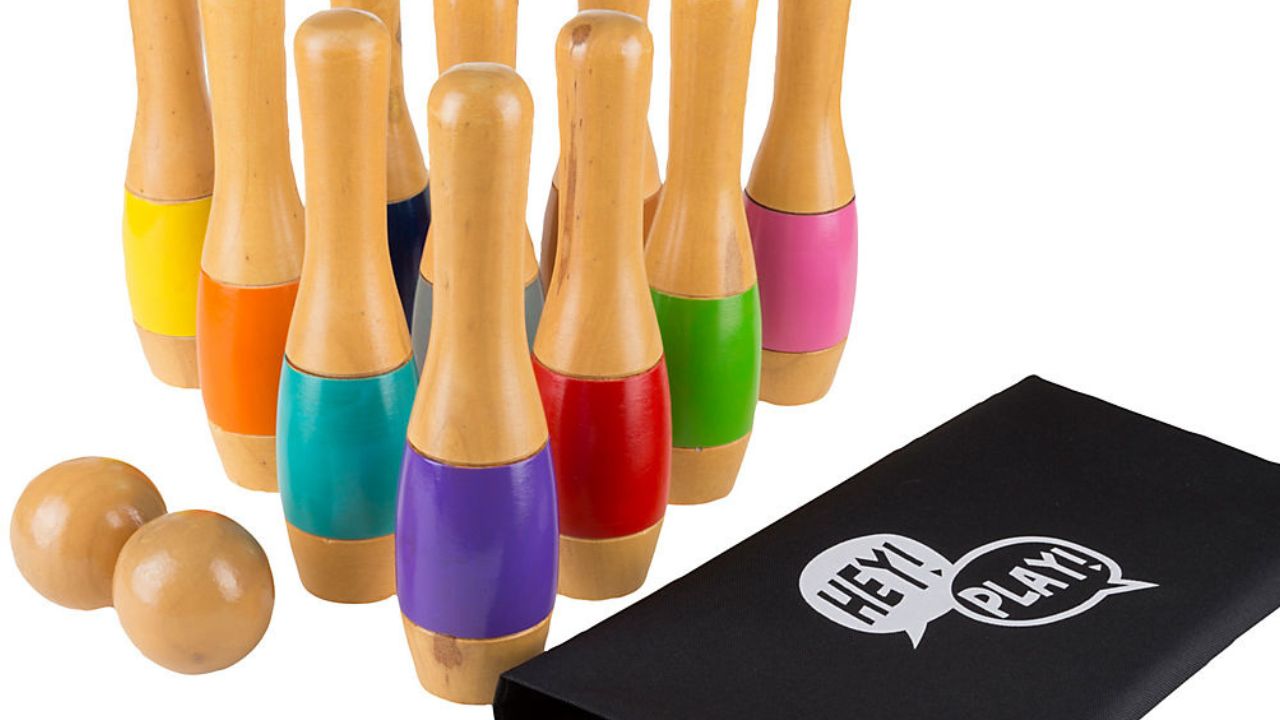Bowling pins come in two primary types: ten-pin and duckpin. These pins vary in size, shape, and weight to match their specific games.
Bowling is a sport that captures the thrill of precision and skill, attracting diverse enthusiasts worldwide. Central to the game are the pins, the targets that bowlers aim to knock down. The standard ten-pin bowling pins are tall and slender, designed for the most widely played form of bowling, and are recognized by their iconic white appearance with a red neckband.
On the smaller end of the spectrum are duckpin bowling pins, which are shorter, lighter, and slightly fatter, catering to a variation of the game that offers a unique challenge due to the pins’ reduced size. Selecting the right type of pin is crucial as it significantly affects gameplay, making understanding these differences essential for both casual players and professional bowlers alike. With advances in materials and design, modern bowling pins also offer durability and consistent performance, ensuring a fair game.

Credit: www.bjs.com
Introduction To Bowling Pins
Bowling pins have a rich history that shapes their look and feel today. Originally, pin shapes varied widely, reflecting the diverse ways people played the game. Over time, standards emerged. This led to the familiar, sleek design seen in alleys worldwide.
Key aspects of a pin’s design include height, width, and weight. These traits ensure a uniform experience. They help players know what to expect each time they bowl. Manufacturers also focus on durability and balance to withstand constant impacts. This guarantees that pins can take hit after hit without breaking easily.
Materials And Manufacturing
Classic wooden pins have a rich history in bowling. Traditional lanes feature hard rock maple. This wood is known for its durability and resilience. Skilled craftsmen shape and sand the wood. The pins then receive a coat of plastic to protect them.
Today’s modern synthetic options blend materials like plastic, nylon, or phenolic resin. These blends make pins more resistant to damage.
Manufacturing processes have evolved. They now include advanced automation and control systems. Factories use precise machinery to ensure consistent shape and size. The quality check is rigorous to meet official standards.
Standard Ten-pin Bowling Pins
Standard Ten-Pin Bowling Pins have specific measurements and characteristics for official games. Each pin stands 15 inches tall with a diameter of 4.7 inches at its widest point. The weight is carefully balanced, totaling 3 pounds and 6 ounces to ensure consistency in the game. Materials used in construction impart durability, often a plastic coating over a maple wood core. This combination allows pins to withstand repeated impacts.
Weight distribution in a pin is key to its performance. A low center of gravity helps the pin stand upright. Good weight distribution makes pins fall in a predictable manner, important for scoring accuracy.
Pins used in professional settings undergo regular testing for durability and performance. Constant strikes and collisions require pins that resist cracking and chipping. Enjoyable gameplay depends on quality pins that perform consistently over time.
Varieties Across Bowling Disciplines
Duckpin bowling pins are shorter and squatter than traditional ten-pin bowling pins. They have a unique shape that makes them different. Players use smaller balls to knock them down.
Candlepin bowling pins stand tall and thin, almost cylindrical in shape. They do not have the familiar ‘neck’ of other pins. The balls used here are also smaller than ten-pin balls.
Five-pin bowling pins are between duckpin and ten-pin sizes in height. They feature a rubber band around their center. This band makes them bounce more when hit. Small, hand-sized balls are used in five-pin bowling.
Custom And Novelty Pins
Custom and novelty bowling pins elevate the game’s fun. Themed pins showcase popular culture icons or seasonal motifs. Brands often custom-make pins for effective advertising.
Special events use unique pins to add excitement. Think birthdays or corporate tournaments. These pins often feature special designs or messages.
Exploring innovative materials can lead to unique experiences. Pins made from recycled materials or glow-in-the-dark elements are examples. They offer a twist to the traditional game.
Maintaining And Replacing Pins
Bowling pins last for 1 to 2 years on average. High-traffic bowling alleys might see pins wear out faster. Common signs of pin wear include dents, scratches, and discoloration. Regular inspections can spot these issues early.
Pins needing replacement will have noticeable damages on the neck and belly. The sound of the pinfall may also change. Cracks or splits are clear indicators that pins must be replaced soon.
| Step | Replacement Process |
|---|---|
| 1 | Remove damaged pins from lanes |
| 2 | Check inventory for new pins |
| 3 | Place new pins in pinsetter |
| 4 | Ensure machine alignment is correct |
| 5 | Conduct trial runs for consistency |
The Role Of Pins In Scoring
Understanding the score system is key for bowlers. Knocking down bowling pins earns points. Each bowler gets ten frames to play. A player can roll twice per frame.
Strikes and spares affect scores too. A strike is when all pins fall in one roll. It means ten points plus the next two rolls’ points. A spare is all pins down in two rolls. It gives ten points plus the next roll’s points.
The type of pin can change how players approach the game. Different weights and shapes can make pins fall easier or harder. Players might choose different balls or roll styles. This is because of the pin characteristics.
Choosing The Right Pins For Your Alley
Bowling center owners face a critical decision in selecting the right type of pins. These decisions impact the bowler’s experience and the alley’s budget. High-quality pins promise durability and consistency, but often come at a higher cost. On the other hand, cheaper options may need frequent replacements.
Striking a balance between cost and quality is key. Owners might consider pins with a good mix of both. This decision influences customer satisfaction and operational costs. Engaging bowlers is also critical. Offer them quality equipment. It keeps them coming back for more games. Thus, selecting bowling pins is not just about cost. It is about creating a memorable and consistent bowling experience.
The Strike Formula
Mastering the art of bowling demands mixing skill with the right equipment. The choice of bowling pins is crucial to knocking them down. Practiced players know that different pins react differently. Soft wood pins are lighter and get knocked over easily. Hard wood pins, on the other hand, stand tall against strikes.
A bowler’s technique should complement the pin type. Lighter pins might need a softer touch. Heavier pins may require a more forceful approach. Knowing your pins can lead to better scores.
Always selecting the suitable pin type is similar to finding a secret formula for strikes. It enhances your ability to clear the lane. Keep these tips in mind to improve your game. Choose wisely and watch your scores soar!

Credit: www.elephantstock.com
FAQ
What Are The Common Types Of Bowling Pins?
Bowling pins come in different types, primarily the traditional ten-pin, the thinner duckpin, and candlepin for various bowling styles. Each type has a unique shape and weight to meet specific bowling game regulations.
How Are Ten-pin Bowling Pins Different?
Ten-pin bowling pins are the largest and heaviest, with a wide base and a tall, slender neck. They are designed to maximize pin action in the standard form of bowling and meet specific size and weight standards set by the USBC.
Are Five-pin Bowling Pins Unique?
Yes, five-pin bowling pins are shorter and thicker with a rubber band around the middle, making them unique. The rubber band increases pin action and is specific to five-pin bowling, popular in Canada.
What Material Are Bowling Pins Made From?
Modern bowling pins are typically made of hard maple wood, coated with a durable plastic shell. This construction ensures longevity and consistent performance against the heavy impact of bowling balls.
Conclusion
Exploring the diverse world of bowling pins has been enlightening. From the classic ten-pin to the lesser-known duckpin, each variety brings its own charm and challenges to the lanes. Remember, whether you’re a seasoned pro or a beginner, the right pin choice can greatly enhance your game.
Keep rolling, and strike it big with your newfound pin knowledge!

